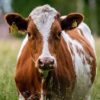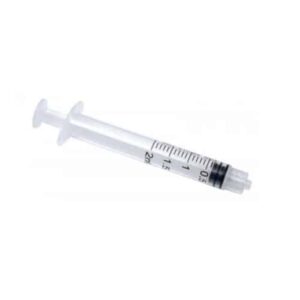
Animal cancer
Some animals never get cancer, while others can catch it from the sea. Find out more in our list of things you never knew about cancer in the wild.
Cancer is widespread in the animal kingdom; it affects molluscs, fish, reptiles, birds and mammals. Some species develop cancers very similar to humans, while others are affected by a rare, contagious form of the disease. At the other end of the spectrum, some species rarely get cancer. Genomic analysis holds the key to understanding these differences, and if we can harness that knowledge, it could help treat cancer in all its forms.
1. Clams and cockles get contagious cancer
Termed neoplasia, it has similarities to human leukaemia. It’s been found in clams, cockles, mussels and other bivalve molluscs across the world.[ The disease causes molluscs’ circulatory fluid to thicken and turn cloudy as large, cancerous cells accumulate. The cells clog up their tissues and eventually will kill the animal. Unlike leukaemia, neoplasia is not caused by changes in the DNA of an individuals’ own cells, which then divide and multiply in the body. Genomic analysis in 2016 found that the neoplasia cells taken from different molluscs are related to each other, not the individual they reside in.
Bivalves are filter feeders and so it is likely that the cells spread from one individual to another through the seawater. The cells settle in a new host, divide and multiply. How the cells survive remains unknown. The cancer can wipe out whole populations of shellfish, though the communities do usually recover.
Sanger Institute researcher Dr Daniel Garcia Souto is working with collaborators in Spain at the University of Santiago de Compostela and the University of Vigo to sequence the genomes of neoplasia cells from bivalves across Europe. They want to understand the similarities and differences with other contagious cancers and human leukaemia. The creatures could eventually help researchers test or develop new treatments that benefit people.
2. Tasmanian devils and dogs can catch cancer too
Researchers have discovered eight different transmissible cancers so far. Two in Tasmanian devils, one in dogs, and the rest in bivalve molluscs.
The Tasmanian devil cancers are facial tumours, passed between the devils when they bite each other, which they do frequently. Like the clam cancer, it hasn’t evolved from the mutated cells of the individuals it lives in. It’s deadly, and has pushed the creatures towards extinction, though scientists have recently discovered that the devil’s immune system is fighting back, and their numbers are stabilising.
A form of contagious cancer also affects stray dog populations – canine transmissible venereal tumours (CTVT). This cancer is thought to have arisen from an individual dog 11,000 years ago, termed the ‘founder dog’. The tumours are sexually transmitted, and are seen in stray dog populations in all corners of the world, though curiously not in dogs living in the exclusion zone around the Chernobyl nuclear power plant.
These transmissible cancers have been likened to parasites, life-forms in their own right, spreading from host to host.
Cancer has never been passed from animals to people, but there have been extremely rare cases of person-to-person transmission of cancer. It has only been reported a handful of times – during an organ transplantation, experimental treatment and a surgical accident.
It remains a mystery how transmissible cancers form and exist at all.
3. Bowhead whales can live to 200 and they don’t get cancer
At the other end of the scale, there are animals that very rarely get cancer. Bowhead whales are the longest living mammals. In May 2007, a bowhead whale caught off the Alaskan coast was found to have the head of a harpoon buried in its blubber. The harpoon was manufactured between 1879 and 1885, making the whale somewhere between 115 and 130 years old. Scientists have since estimated that the creatures can live to over 200.
Bowhead whales are also among the largest mammals, with some growing to 20 meters and weighing in at 100,000 kilograms. Their massive size means they have an estimated 3.7 quadrillion cells, 1,000 times the amount we do.
With so many cells, each containing a copy of the whale’s genome and the propensity for genetic typos, you might predict that cancer would be 1,000 times more common in whales than in humans. But the animals are seemingly resistant. This phenomenon is termed ‘Peto’s paradox’ after the Oxford-based scientist who first described it.[
Scientists are fascinated by how these animals can live so long, unaffected by a range of diseases. The bowhead whale genome was sequenced in 2016 and researchers hope it will give them clues into healthy aging.
Bowhead whales aren’t the only large mammals resistant to cancer….
4. Elephants have 20 copies of a tumour-suppression gene, humans only have one
Scientists have a theory as to why elephants are resistant to cancer. They have 20 copies of a tumour suppressor gene called tp53 a.k.a. the “guardian of the genome”. Humans have just one copy.[
In most human cancers tp53 is mutated, meaning it can’t carry out its normal tumour busting tasks. With spare copies of the gene, it may be that elephants’ cells can handle many more mutations before a cell is transformed into a cancer cell. Scientists are investigating how this knowledge could help develop new cancer treatments for people.
5. Naked-mole rats are resistant to cancer
There are small creatures that are resistant to cancer too. Naked mole rats are possibly the most famous ones (if you are a cancer researcher at least. They aren’t popular pets). They can live to 30 years old; a similar-sized mouse only lives to four. Cancer has only been seen a few times in a naked mole rat.
Their cancer resistance is thought to have a completely different mechanism to the one in elephants though. One theory is that it is due to the large, viscous molecule secreted by their skin cells. The molecule is much longer than the equivalent molecule in mice or humans. It’s thought to have evolved to allow their skin to easily stretch as they squeeze through small underground tunnels. It could also be making them cancer resistant, by making it harder for cancer cells to divide and spread within the body.
6. Skin cancer in humans, dogs and horses has the same genetic changes
Mucosal melanoma is a rare and poorly understood type of skin cancer. Usually skin cancer is caused by exposure to UV light, but the cause of mucosal melanoma is unknown. It can occur on mucosal linings of the sinuses, nose, mouth, vagina and anus. It’s seen across mammal species including humans, dogs and horses. By studying the genomes of the cancer cells in the different animals, Sanger Institute researchers have discovered a handful of genes that are mutated in this form of cancer across all three species. These genes are likely to be what is driving the cancers to mutate and grow, and so represent potential targets for new drugs.
It’s all about the DNA
Whatever form cancer takes, it is caused by changes to DNA. Those changes lead to cells dividing uncontrollably and eventually may form tumours. If researchers can understand the DNA changes that lead to cancer, they can understand how to stop, or reverse them to prevent and treat the disease.















































